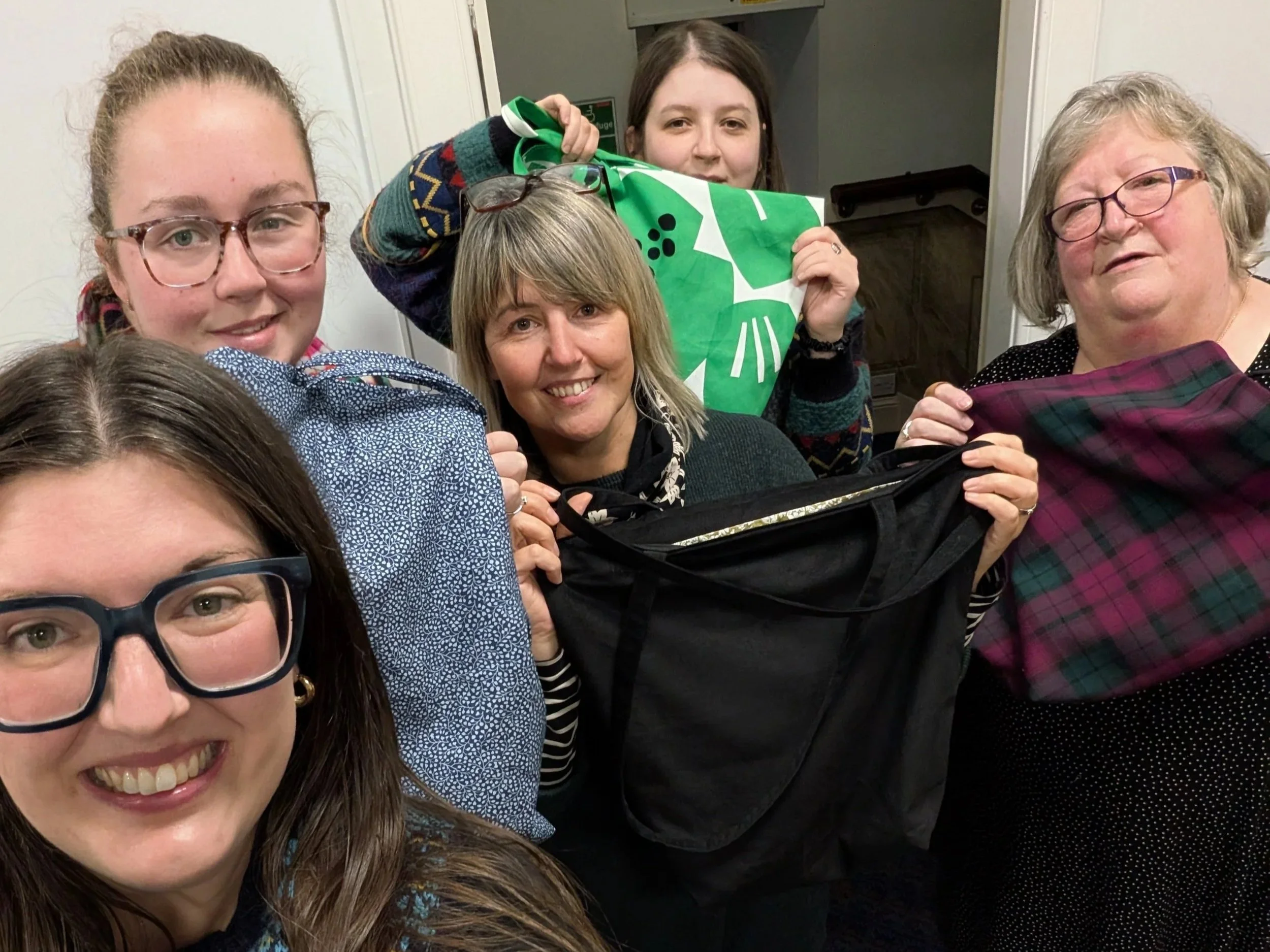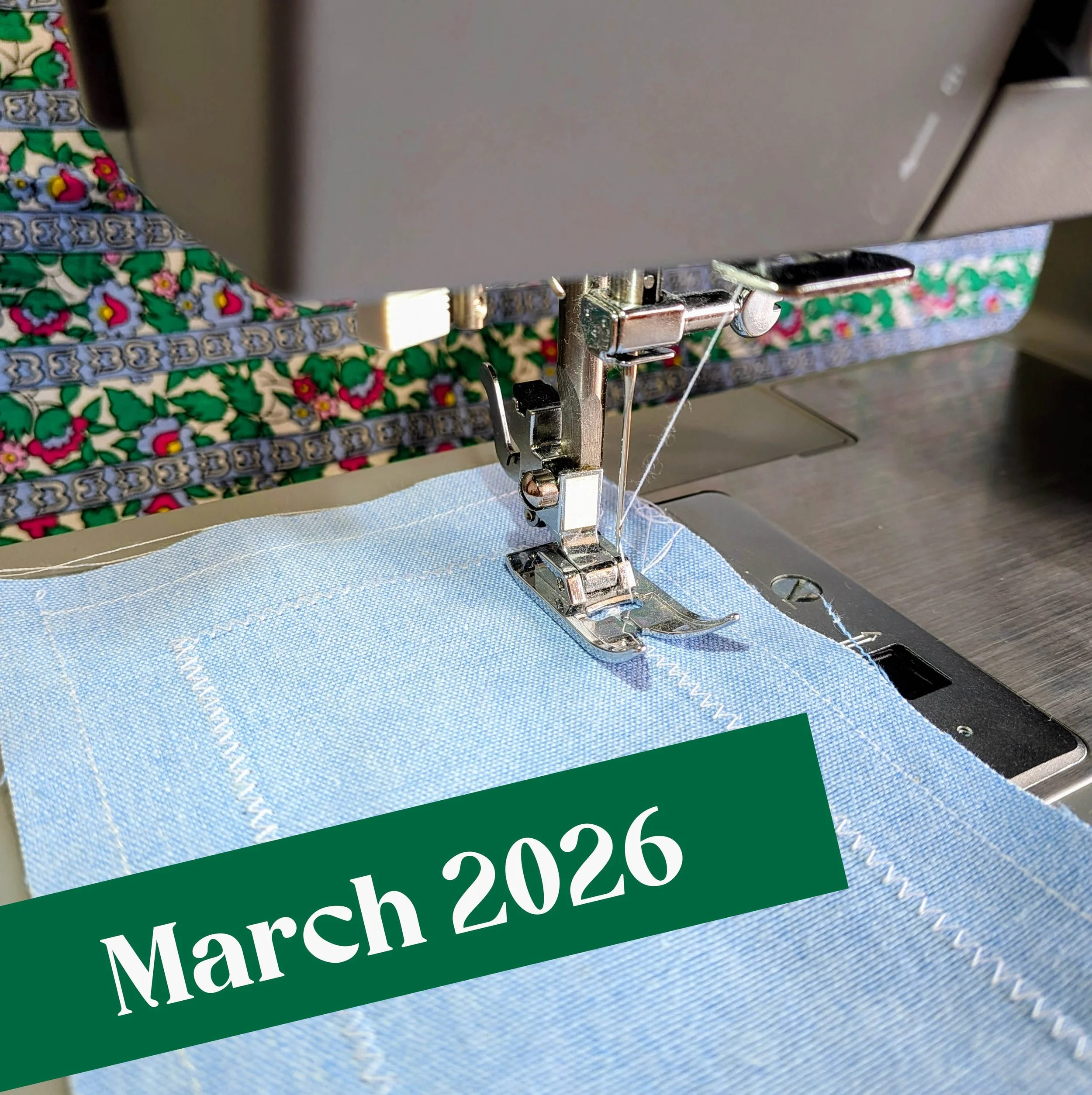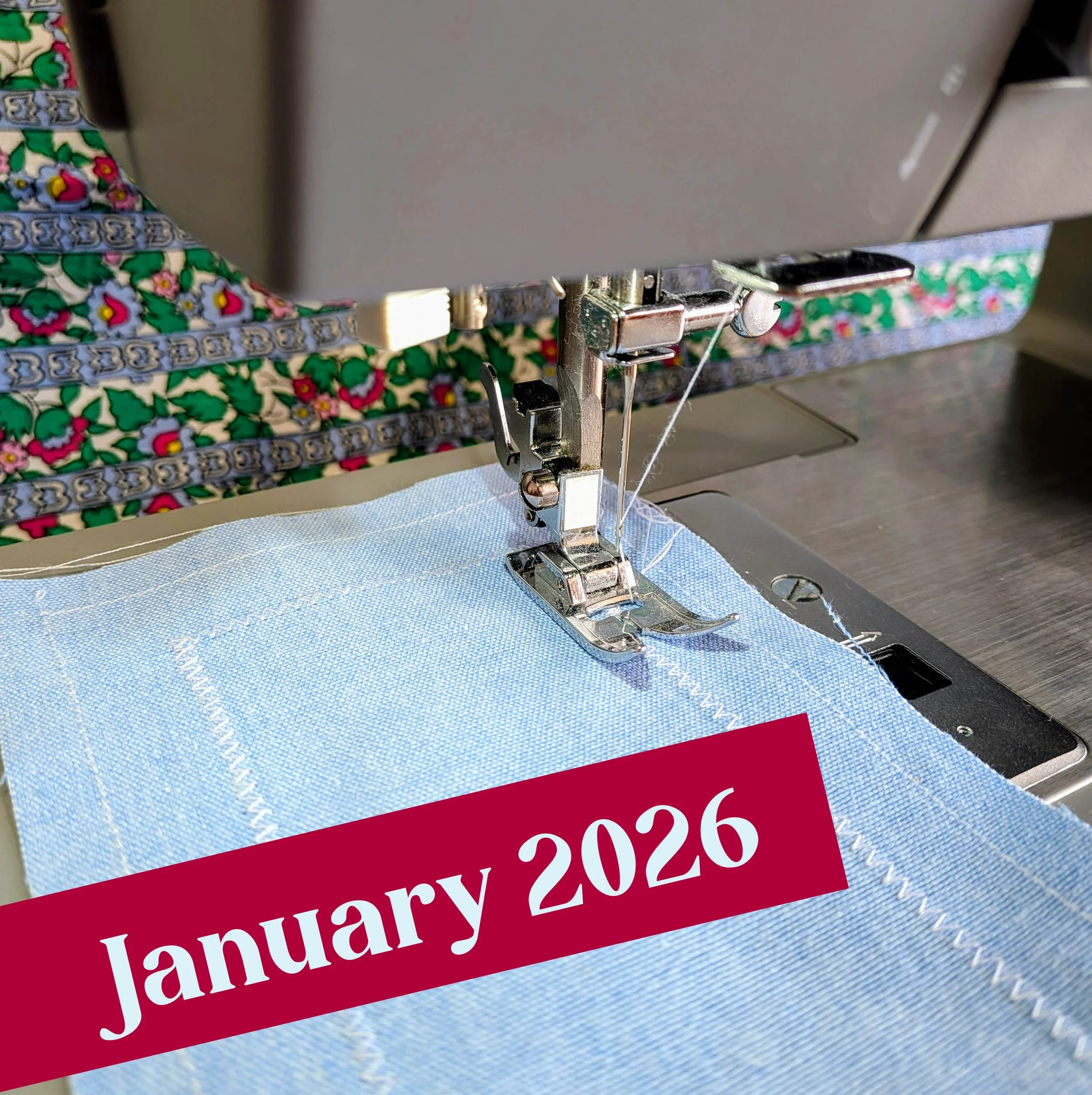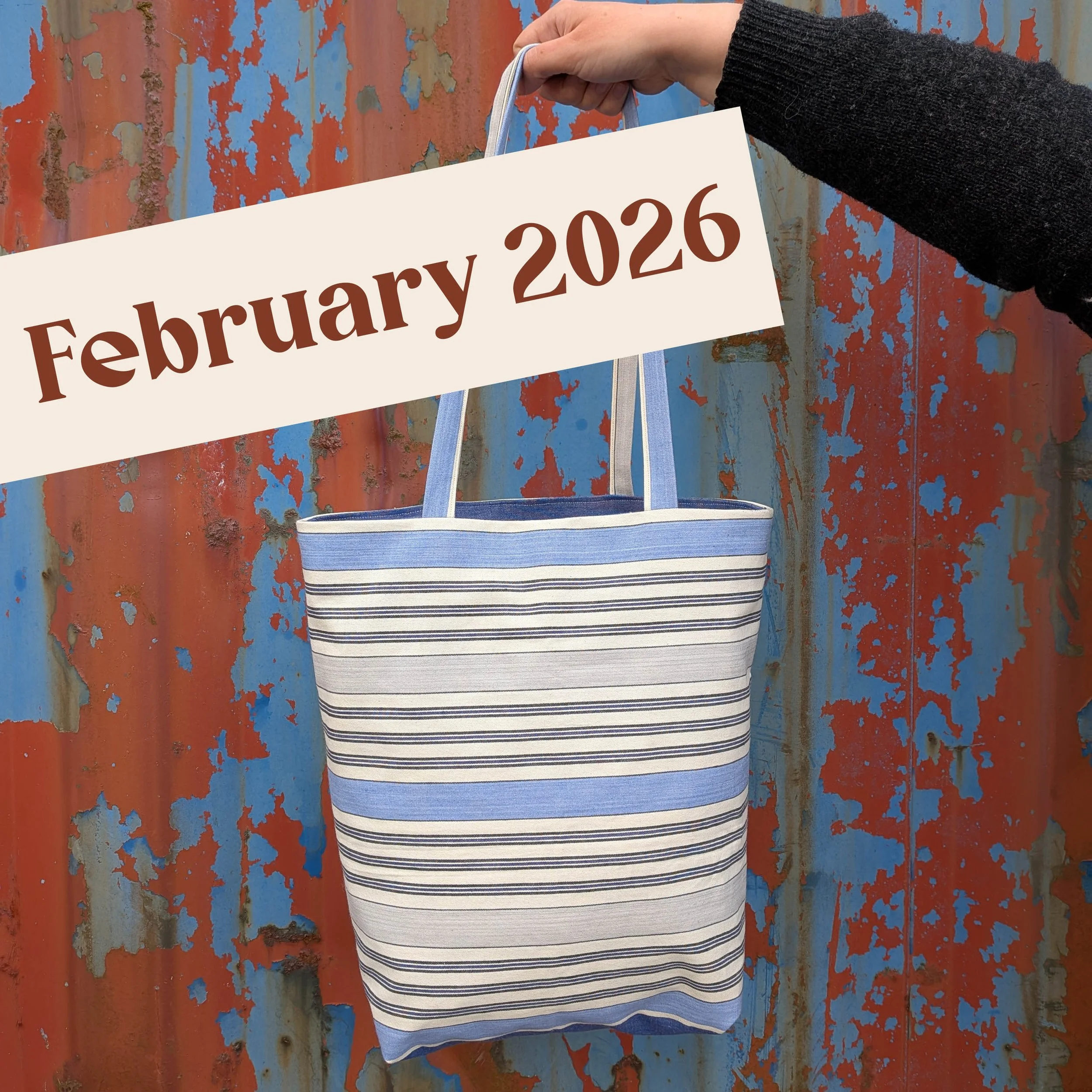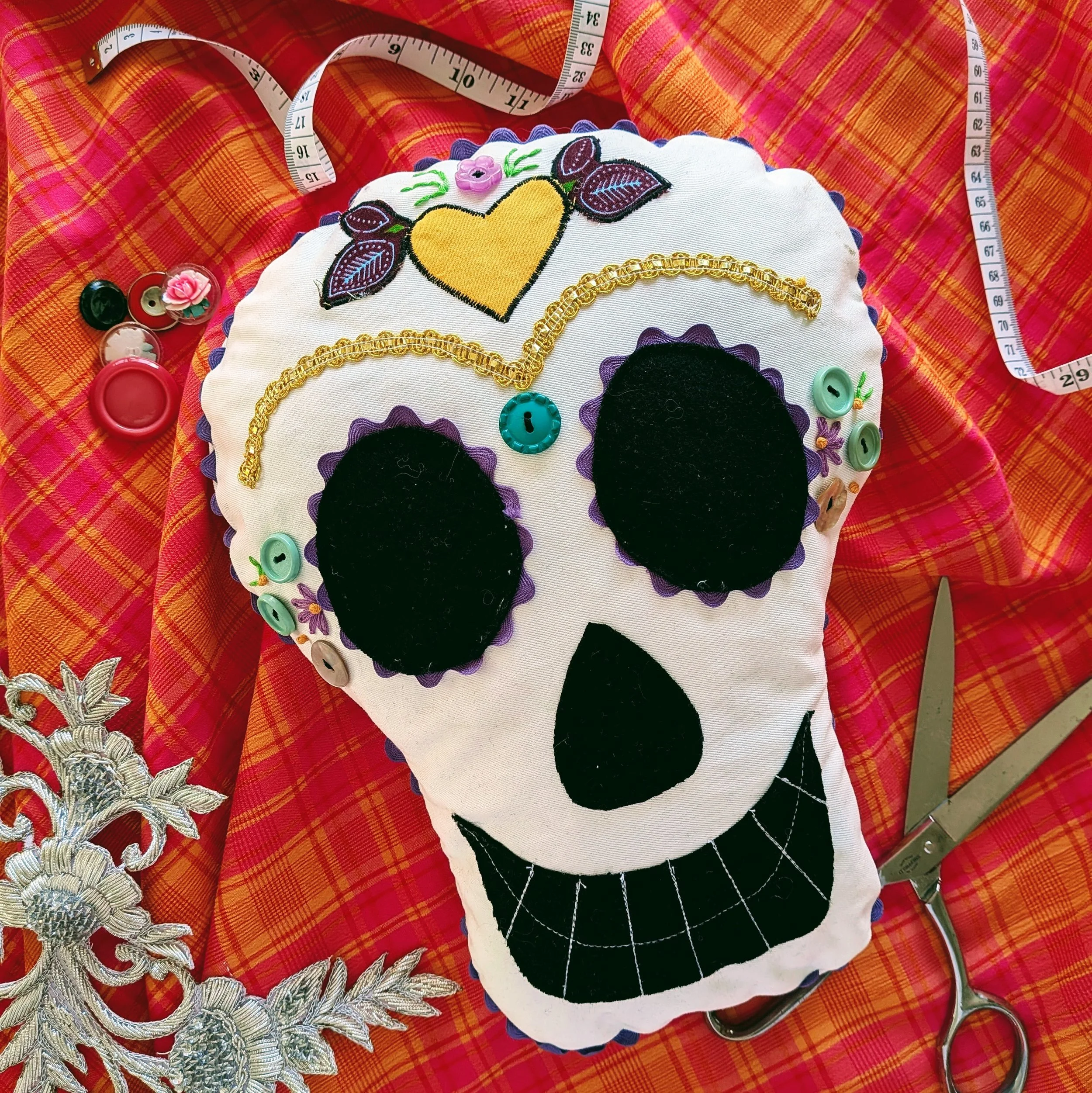Where and When
Radio Room, Islesburgh Centre, Lerwick.
4 x Tuesday evenings, 7pm - 9:30pm.
2nd September 2025, 9th September 2025, 16th September 2025, 23rd September 2025.
About the Course
The Everyday Tote is a beautiful sewing pattern, and ideal for beginner sewists. It’s strong, fully lined and has handles long enough to sling over your shoulder. It’s big enough for books and a jumper, but also has a zipped welt pocket inside for your keys and other small essentials. It’s gender-neutral and easy to customize, so you can keep it for yourself or give it as a gift. Choose your own fabrics, and make it perfect.
This course is designed as an introduction to using a sewing pattern for anyone who might have previously lacked the knowledge or confidence to tackle a pattern on their own. You will use standard pattern markings and clear instructions, with demonstrations and guidance from an experienced teacher. You’ll come away with a beautiful new bag, as well as the skills and confidence you’ll need to tackle another make.
The Everyday Tote was designed by and reproduced with permission of The New Craft House - an inspiring all-female team of pattern designers and deadstock fabric retailers, who are fantastic ambassadors for slow fashion in all its forms. Have a look at their website, and consider subscribing to their newsletter.
What You’ll Learn
Week 1
Understanding a lay plan, using grainlines, transferring pattern markings, cutting out.
Week 2
Threading up and using a sewing machine, using fusible interfacing, inserting a zip
Week 3
Accurate construction with a seam allowance
Week 4
Under-stitching, slipstitching by hand.
What’s Included:
Printed sewing pattern and instructions (for you to keep and reuse)
Fusible Interfacing
Zip
Access to a Singer Heavy Duty 4423 Sewing Machine
Access to an iron and ironing board
Access to basic sewing tools: paper scissors, pins, needles, fabric shears, tailor’s chalk, measuring tape, seam ripper
Tea/Coffee and some sweet treats
What to Bring:
1m of a mid to heavy-weight non-stretch fabric* for the outside of the bag. Cotton canvas, cotton furnishing fabric, ticking and non-stretch denim would all work well.
0.5m of a lighter weight non-stretch fabric* for the lining. As this is a beginners class, I’d advise against using slippery fabrics like satin. Instead, opt for a lightweight cotton like cotton lawn, quilting cotton or ankara.
Matching thread - I’d recommend Coats or Gutterman for the best quality and choice of colours.
OPTIONAL: Bring your own basic sewing kit if you’d prefer to use your own.
* a note on choosing fabric! Check your fabric width before buying anything. Your fabric must be at least 115cm wide, otherwise you won’t have enough. Also - I’d normally advocate for reusing second-hand fabrics wherever possible, but please don’t for this project - a large part of the class on Week 1 will focus on understanding lay plans and pattern placement, and this becomes a whole lot harder if your fabric isn’t a standard size or shape. Don’t run before you can walk! If you’re really stuck on fabric, please contact me in advance - I normally have a few options you can choose from for an additional cost.
Questions?
If you’d like to know more about any of our classes, feel free to get in touch.
Where and When
Radio Room, Islesburgh Centre, Lerwick.
4 x Tuesday evenings, 7pm - 9:30pm.
2nd September 2025, 9th September 2025, 16th September 2025, 23rd September 2025.
About the Course
The Everyday Tote is a beautiful sewing pattern, and ideal for beginner sewists. It’s strong, fully lined and has handles long enough to sling over your shoulder. It’s big enough for books and a jumper, but also has a zipped welt pocket inside for your keys and other small essentials. It’s gender-neutral and easy to customize, so you can keep it for yourself or give it as a gift. Choose your own fabrics, and make it perfect.
This course is designed as an introduction to using a sewing pattern for anyone who might have previously lacked the knowledge or confidence to tackle a pattern on their own. You will use standard pattern markings and clear instructions, with demonstrations and guidance from an experienced teacher. You’ll come away with a beautiful new bag, as well as the skills and confidence you’ll need to tackle another make.
The Everyday Tote was designed by and reproduced with permission of The New Craft House - an inspiring all-female team of pattern designers and deadstock fabric retailers, who are fantastic ambassadors for slow fashion in all its forms. Have a look at their website, and consider subscribing to their newsletter.
What You’ll Learn
Week 1
Understanding a lay plan, using grainlines, transferring pattern markings, cutting out.
Week 2
Threading up and using a sewing machine, using fusible interfacing, inserting a zip
Week 3
Accurate construction with a seam allowance
Week 4
Under-stitching, slipstitching by hand.
What’s Included:
Printed sewing pattern and instructions (for you to keep and reuse)
Fusible Interfacing
Zip
Access to a Singer Heavy Duty 4423 Sewing Machine
Access to an iron and ironing board
Access to basic sewing tools: paper scissors, pins, needles, fabric shears, tailor’s chalk, measuring tape, seam ripper
Tea/Coffee and some sweet treats
What to Bring:
1m of a mid to heavy-weight non-stretch fabric* for the outside of the bag. Cotton canvas, cotton furnishing fabric, ticking and non-stretch denim would all work well.
0.5m of a lighter weight non-stretch fabric* for the lining. As this is a beginners class, I’d advise against using slippery fabrics like satin. Instead, opt for a lightweight cotton like cotton lawn, quilting cotton or ankara.
Matching thread - I’d recommend Coats or Gutterman for the best quality and choice of colours.
OPTIONAL: Bring your own basic sewing kit if you’d prefer to use your own.
* a note on choosing fabric! Check your fabric width before buying anything. Your fabric must be at least 115cm wide, otherwise you won’t have enough. Also - I’d normally advocate for reusing second-hand fabrics wherever possible, but please don’t for this project - a large part of the class on Week 1 will focus on understanding lay plans and pattern placement, and this becomes a whole lot harder if your fabric isn’t a standard size or shape. Don’t run before you can walk! If you’re really stuck on fabric, please contact me in advance - I normally have a few options you can choose from for an additional cost.
Questions?
If you’d like to know more about any of our classes, feel free to get in touch.






